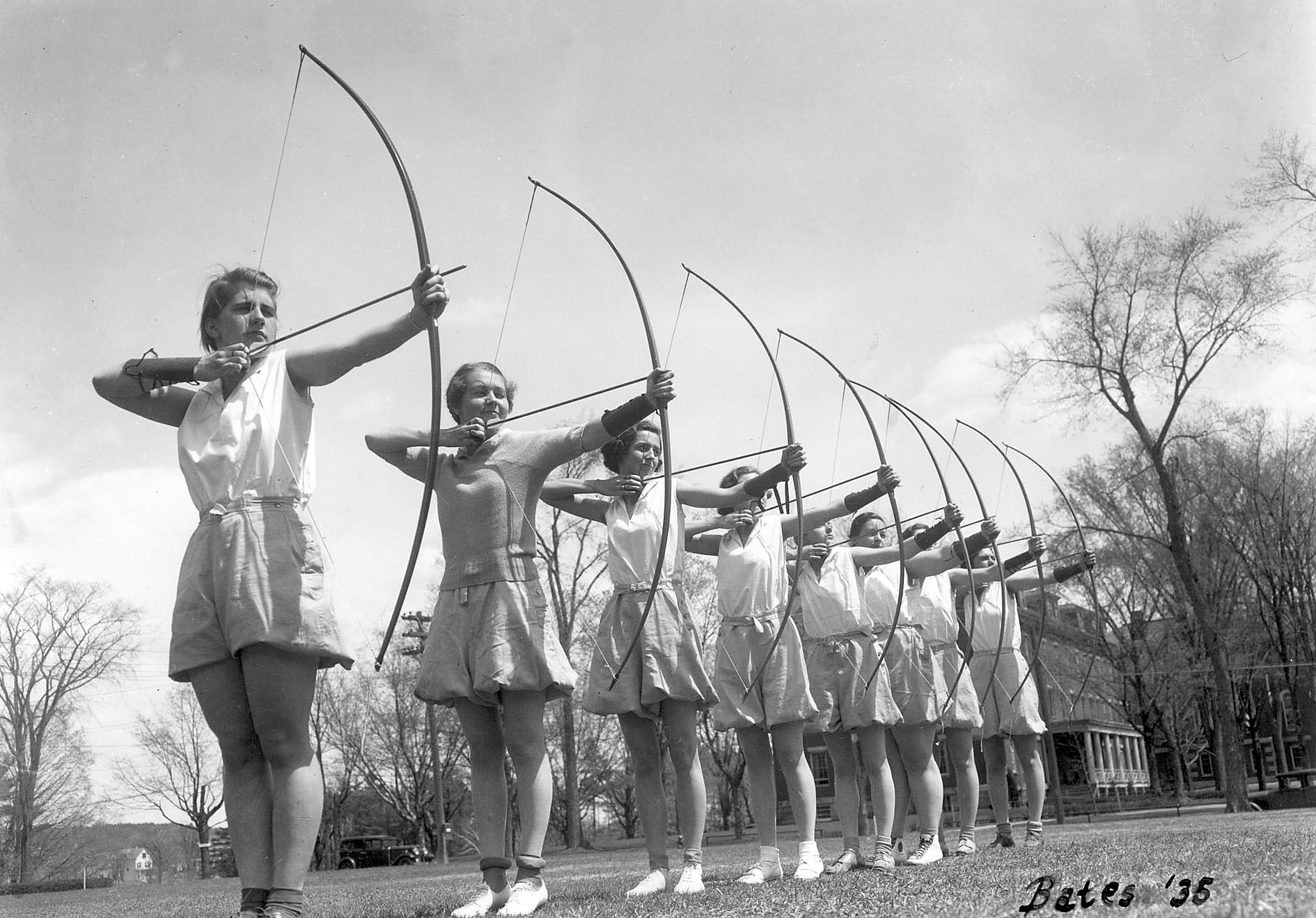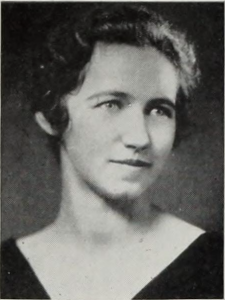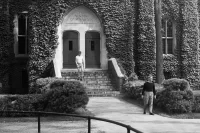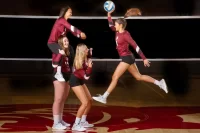
Ninety years ago this May, The Bates Student reported on an intercollegiate athletic competition for Bates women: an archery tournament vs. “unseen opponents….from many colleges and universities of the United States.”
The opponents were “unseen” because they didn’t travel to the Bates campus to compete, nor did Bates archers travel to theirs.
Instead, the 1931 Bates women’s archery team participated in a “telegraphic” tournament, where teams shot their bows on their own campuses, tallied the points, and telegraphed, as in dot-dot-dash Morse code traveling through wires, their scores to an offsite host for tallying.
This brief film clip shows Bates archers on the old Rand Field in the 1930s. (Muskie Archives and Special Collections Library)
The 1931 Women’s Intercollegiate Telegraphic Archery Tournament is thought to be the first intercollegiate competition joined by Bates women, according to Bates Through the Years, by the late Charlie Clark ’51. It was run by the University of Wisconsin under the auspices of the National Archery Association.
While today’s virtual events, made possible by the marvels of the internet, feel distinctive, using telecommunications to bring people together, in this case for competition, could be considered old hat.
By the 1930s, telegraphic tournaments had been going on for nearly half a century. In the 1880s, U.S. newspapers began reporting on telegraphic chess and checkers tournaments. By the early 1900s, there were telegraphic tournaments in archery, bowling, and, especially, skeet shooting, allowing gun club members throughout the vast West and Northwest U.S. to compete with one another.
(There were even popular in-person “fast-telegraphic tournaments” for telegraph operators themselves. A 1890 tourney in New York City was won by a little-known railroad telegrapher, B.R. Pollock Jr., who sent 260 words in five minutes.)
In summer 1928, an amateur golf association promised the first annual National Telegraphic Golf Tournament. “The click of the telegraph and the hornet hum of whissing balls will be heard in every state in the union,” promised a United Press story. But there’s no evidence the tournament ever happened.
The rise of telegraphic women’s archery tournaments wasn’t prompted so much by the challenges of travel and distance. Instead, the physically distanced events were a reaction to the state of men’s collegiate sports.

By the second decade of the 1900s, men’s collegiate sports, especially football, plagued by bribery scandals, were becoming a mess. A scathing report by the Carnegie Foundation for the Advancement of Teaching said, “College sports have been developed from games played by boys for pleasure into systematic professionalized athletic contests for the glory and, too often, for the financial profit of the college.”
In response, U.S. women sports leaders, specifically the Women’s Division of the National Amateur Athletic Federation, sought to develop a more inclusive and participatory approach for women’s college sports, emphasizing play for play’s sake.
A refrain of the time, which became the motto of the Bates Women’s Athletic Association, was “a sport for every girl and a girl for every sport” (sometimes rendered as “a sport for every girl, and every girl in a sport”).
Thus it happened that in 1931, to “add more zest to our spring season of archery,” according to a Althea Howe Adelhelm ‘32 in the Student, Bates archers entered the telegraphic tournament, as they would in subsequent years, through the early 1950s.
“A woman has to be four times as smart and work four times as hard to get to the same pay level as a man.”

The Bates archers in the 1931 tournament — a group that we might now call Bates’ first women’s varsity team — were Rebecca Carter Bailey ’33, Mary Hoag Moran ’32, Deborah Thompson Tolfsen ’34, and Eileen Soper ’34. (While a full archery squad was eight, Bates fielded a five-person team.) UCLA women won the tournament, in which 66 U.S. colleges compared.
After Bates, Moran became a field investigator for Harvard Law School, while Tolfsen and Soper were teachers, the former on Staten Island and the latter at Wellesley (Mass.) High School.
Rebecca Bailey volunteered for the WAVES in World War II, then earned a master’s degree from the University of Wyoming. (The records are unclear, but she and her husband may have retired to a farm in Bethel, Maine.)
Bailey’s observations about her experiences with the WAVES in World War II scored a bullseye: “It still holds true that a woman has to be four times as smart and work four times as hard to get to the same pay level as a man.”




